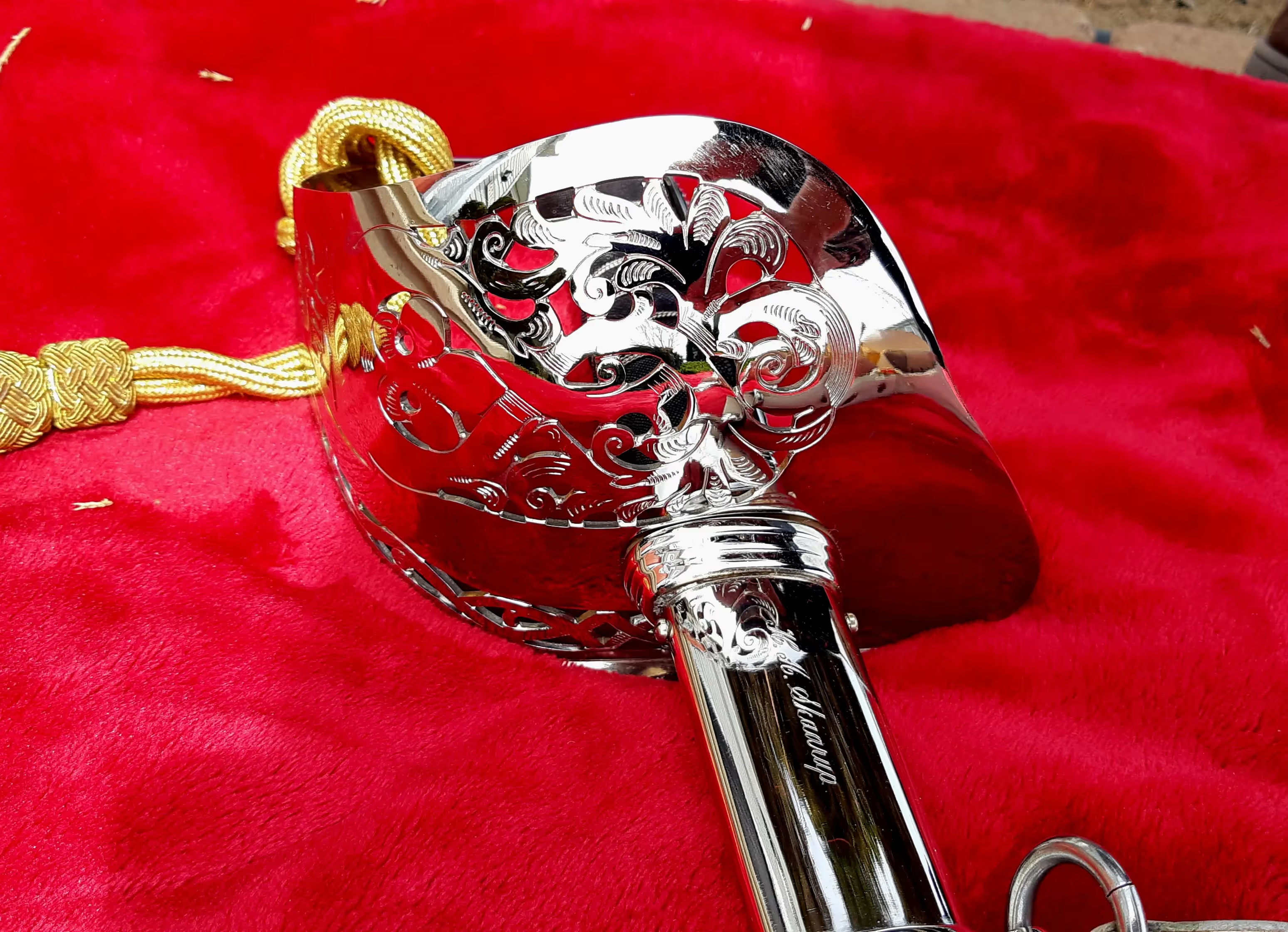Sword, Canadian Army Intelligence Officer
Infantry Officer Sword
Canadian Armed Forces

City of Fredericton parade with elements of 1 RNBR and 5 CDSB Gagetown, Mayor Brad Woodside at the saluting stand in front of City Hall, 2011, with my sword and I at the right.
"Back in the day", although not required, it was expected that an Army Officer in the Canadian Forces would own and carry their own swords on ceremonial occasions. Traditionally, one purchased the sword at the time of commissioning, with the date of the commission and one's name engraved on both the sword blade and scabbard. One of this officer's proud moments was taking part in the Freedom of the City of Fredericton parade carrying my sword. Some details are attached for your interest.
Solingen Blade, length 825-mm, blade width 25-mm, blade thickness 6.5-mm, nickel-plated, engraved with QE II Royal cypher, Damascus Star and officer's name and date of commission. Almost all military swords of the past century, regardless of trademark, are made from Solingen blanks. The Wilkinson sword, usually regarded as the best, is no exception.
Scabbard, 865-mm, nickel-plated, hand-polished steel tube with two attachment rings, engraved with officer's name and date of commission.
Guard, pierced with Queen Elizabeth II Royal cypher, hand-polished, nickel-plated with nickel-plated brass cap. The Royal Cypher has appeared on most Commonwealth swords since King George I began the custom in 1725.
Gold sword knot fixed to the guard.
Sharkskin grip, wrapped with three silver-plated wires in seven rows.
Produced in accordance with the British MOD specifications UK/SC/6202 Issue, and Canadian DND/DSSPM specifications.
Sword and scabbard engraved with the name H.A. Skaarup, date of commission 1 Sep 1973.
Canadian Armed Forces pattern white leather sword belt and side slings, finished on both sides, with gold plated brass fittings.



King George I, George II and George III all used the same Royal cypher—an entwined "GR". King George IV used simply the letter "G" with numerals "IV" below it. Queen Victoria used the familiar entwined "VR". King Edward VII used a large letter "E" with the numerals "VII" encircled by the lower loop of the "E". King George V used the letters "GR" with a smaller "V" centred between. King Edward VIII used the letters "ER" with "VIII" centred between. Quenn Elizabeth II uses the familiar "ER" with a small "II" between, as shown here.




(Author Photos)
Historically, the sword developed in the Bronze age, evolving from the dagger. The earliest specimen's date to about 1600 BC. The later Iron Age sword remained fairly short and without a crossguard. The spatha, as it developed in the late Roman Army, became the predecessor of the European sword of the Middle Ages, at first adopted as the Migration Period sword, and only in the High Middle Ages, developed into the classical arming sword with crossguard.
The Crown has long occupied a central position in the Canadian Armed Forces. The National Defence Act states that "the Canadian Forces are the armed forces of Her Majesty raised by Canada, consisting of one service called the Canadian Armed Forces" and the Constitution Act, 1867, vests command-in-chief of the Forces in the country's sovereign, who, since 1904, has authorized his or her viceroy, the governor general, to exercise the duties ascribed to the post of commander-in-chief and, since 1905, hold the associated title. All troop deployment and disposition orders, including declarations of war, fall within the royal prerogative and are issued as orders-in-Council, which must be signed by either the monarch or governor general. Under the Westminster system's parliamentary customs and practices, however, the monarch and viceroy must generally follow the advice of his or her ministers in Cabinet, including the prime minister and minister of national defence, who are accountable to the elected House of Commons. (Wikipedia)

In 1983, my CO, Major Dave Robb, advised me that he was going to get married and that I should arrange for us to carry swords during the occasion - and so we did. Later, we carried swords for Tim Armstrong's wedding at CFB Borden in 1994.

